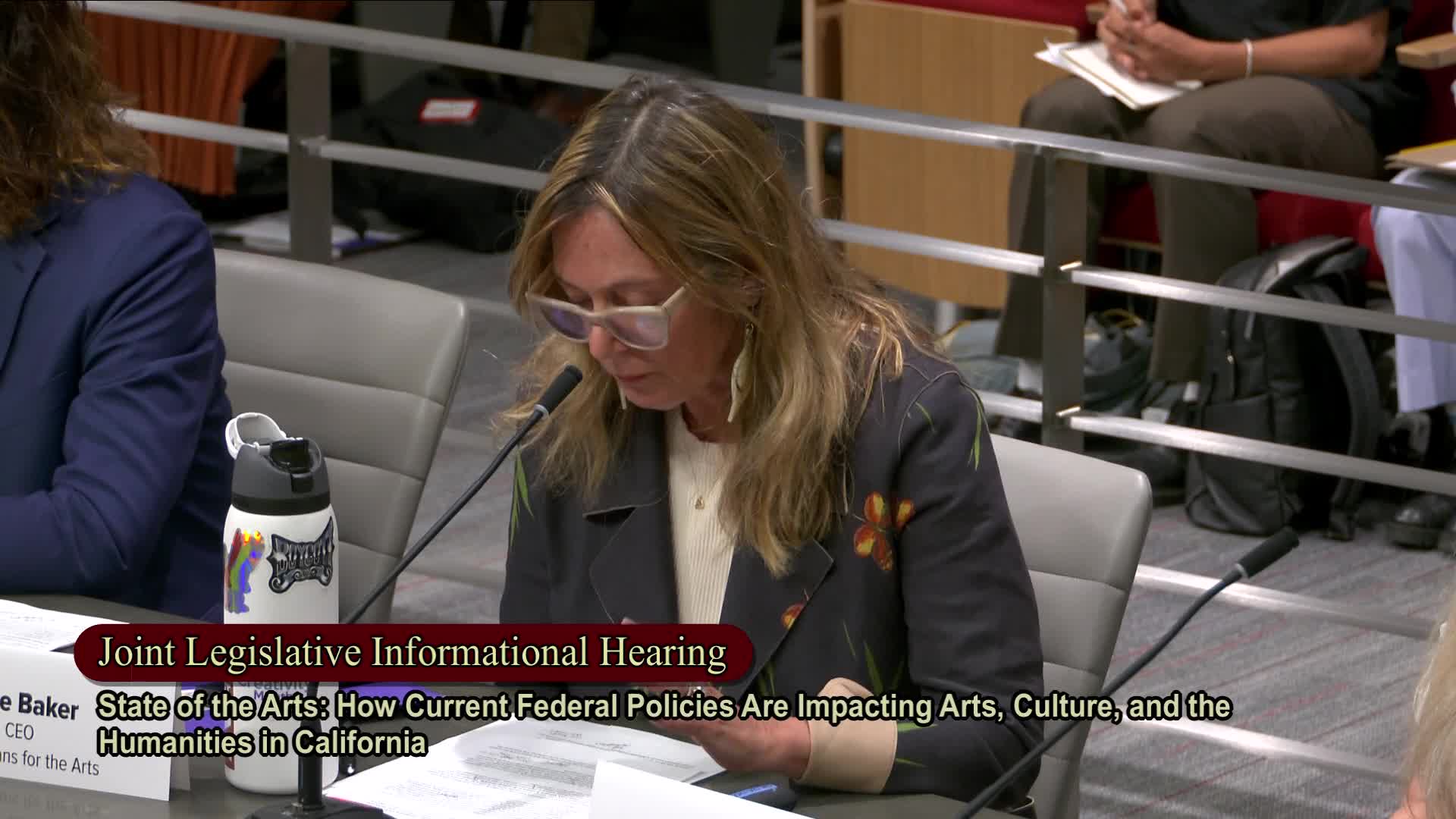California leaders advocate for increased funding to support arts and cultural organizations
May 14, 2025 | California State Assembly, House, Legislative, California
This article was created by AI summarizing key points discussed. AI makes mistakes, so for full details and context, please refer to the video of the full meeting. Please report any errors so we can fix them. Report an error »

In a pivotal meeting held at the California State Assembly, lawmakers and advocates gathered to address the pressing challenges facing the state's arts and cultural sectors. The atmosphere was charged with urgency as speakers highlighted the significant funding cuts that have impacted local arts organizations and cultural programs across California.
The discussion opened with a stark reminder of the financial strain on the arts, with a reported loss of $11 million from arts and parks funding and a $20 million decrease in the California Cultural Districts program. These cuts have left local arts organizations struggling to meet the demands of their communities, with the California Arts Council's local assistance grants being oversubscribed and reduced from $26 million to just $21 million. Advocates called for a restoration of $5 million in this year's budget, emphasizing that such a reinvestment is not only beneficial for the arts but also for local economies.
A particularly poignant moment arose when the proposed elimination of the Performing Arts Equitable Payroll Fund was discussed. This fund, championed by Senator Portentino, was designed to alleviate the financial burdens on small nonprofit performing arts organizations, which have been grappling with the repercussions of Assembly Bill 5. The proposed cuts could further jeopardize the livelihoods of artists and the vibrancy of California's cultural landscape.
Speakers underscored the disconnect between California's status as a leader in arts jobs and its comparatively low public investment in the arts, ranking 35th in the nation for arts spending. This disparity raises concerns about the sustainability of the creative sector, as artists face increasing economic hardships that may force them to leave the state. The loss of these cultural assets threatens to diminish California's unique appeal and competitive edge in the global creative economy.
Amidst these challenges, there were calls for a renewed commitment to arts funding, with suggestions to expand successful job programs like the Creative Core, which has already employed over 7,000 artists statewide. Advocates urged lawmakers to prioritize arts funding, aiming to elevate California's ranking in national arts spending and ensure that the state remains a nurturing ground for creativity and cultural expression.
As the meeting concluded, the sentiment was clear: California stands at a crossroads. The arts are not merely a luxury but a vital component of the state's identity and economic health. Lawmakers and advocates alike recognized that investing in the arts is essential for fostering community growth and resilience, especially in these unprecedented times. The call to action was loud and clear—California must protect and invest in its cultural heritage to thrive in the future.
The discussion opened with a stark reminder of the financial strain on the arts, with a reported loss of $11 million from arts and parks funding and a $20 million decrease in the California Cultural Districts program. These cuts have left local arts organizations struggling to meet the demands of their communities, with the California Arts Council's local assistance grants being oversubscribed and reduced from $26 million to just $21 million. Advocates called for a restoration of $5 million in this year's budget, emphasizing that such a reinvestment is not only beneficial for the arts but also for local economies.
A particularly poignant moment arose when the proposed elimination of the Performing Arts Equitable Payroll Fund was discussed. This fund, championed by Senator Portentino, was designed to alleviate the financial burdens on small nonprofit performing arts organizations, which have been grappling with the repercussions of Assembly Bill 5. The proposed cuts could further jeopardize the livelihoods of artists and the vibrancy of California's cultural landscape.
Speakers underscored the disconnect between California's status as a leader in arts jobs and its comparatively low public investment in the arts, ranking 35th in the nation for arts spending. This disparity raises concerns about the sustainability of the creative sector, as artists face increasing economic hardships that may force them to leave the state. The loss of these cultural assets threatens to diminish California's unique appeal and competitive edge in the global creative economy.
Amidst these challenges, there were calls for a renewed commitment to arts funding, with suggestions to expand successful job programs like the Creative Core, which has already employed over 7,000 artists statewide. Advocates urged lawmakers to prioritize arts funding, aiming to elevate California's ranking in national arts spending and ensure that the state remains a nurturing ground for creativity and cultural expression.
As the meeting concluded, the sentiment was clear: California stands at a crossroads. The arts are not merely a luxury but a vital component of the state's identity and economic health. Lawmakers and advocates alike recognized that investing in the arts is essential for fostering community growth and resilience, especially in these unprecedented times. The call to action was loud and clear—California must protect and invest in its cultural heritage to thrive in the future.
View full meeting
This article is based on a recent meeting—watch the full video and explore the complete transcript for deeper insights into the discussion.
View full meeting
